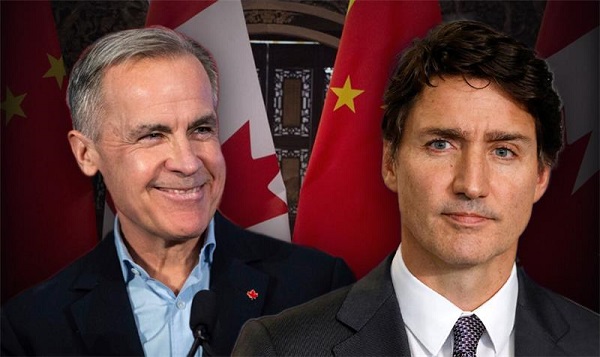Alberta
My European Favourites – Stockholm – Djurgården
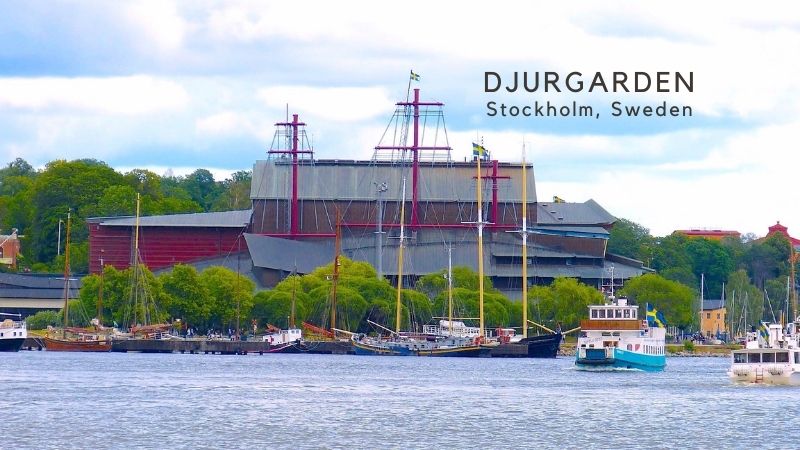
If there was one city in northern Europe that I could easily live in, I think it would be Stockholm.
The Swedish capital has over two million inhabitants and over 50 bridges connecting its fourteen islands. The city often ranks highly on the global “quality of life index” and has over one hundred museums, plus a lively culinary, theatre, music and sports scene.

Gamla Stan’s Stortorget Square, narrow streets and the Royal Palace.
If you enjoy boating, sailing and watersports, Stockholm has Lake Mälaren with more than 1,000 islands to the west. To the east of the city centre, the Saltsjön (Salt Bay) has a lengthy and picturesque archipelago with over 30,000 islands leading all the way to the Baltic Sea. With so many cottages and activities on these islands, they are a perfect getaway from the city hustle and bustle.
Stockholm’s old city centre is on the island of Gamla Stan. The area is full of colorful houses from the 17th and 18th centuries and narrow cobblestoned streets with interesting shops, cafes, pubs and bars. The Royal Palace, official residence of the Swedish monarch, can be toured and the popular changing of the guard is accompanied by a military band in the summer months.

Stockholm aerial view, Stockholm’s city hall and Swedish crown on Skeppsholmsbron Bridge.
Royal Djurgården
Stockholmers enjoy a vast green space right in their city center on the island of Djurgården. The island is Scandinavia’s number one tourist attraction and a favourite for nature lovers, walkers, runners, hikers and cyclists. In addition to being loved for its green spaces, it is famous for having four royal palaces, popular museums, cafes, restaurants and a large amusement park.
The history of Royal Djurgården goes back to 1452 when King Karl Knutsson purchased the southern part of the island. It was a royal hunting ground for many years and over time was opened to the public and expanded.
In 1995, King Carl Gustaf XVI officially opened the world’s first national city park comprising the Ulriksdal, Haga, Brunnsviken and Djurgården districts. The 27 square kilometer park is eight times the size of New York’s Central Park.
On Djurgården, you can see over one hundred bird species and eight hundred varieties of flowering plants. You can easily spend a few days in Stockholm just visiting Djurgården. Here are my favourite things to do on the island.

Djurgården Visitor Center and rental shop on the left from the Djurgårdsbron bridge.
When you enter Djurgården from the west on the Djurgårdsbron bridge, you will find the Royal Djurgården Visitor Center. The center rents bikes to explore the island, and there is a ten to twelve kilometer path that goes around the island. They also have kayaks, canoes or pedal boats. If you want to paddle all the way around the island, expect it to take about two to three hours.
The Sjöcaféet café is located by the visitor’s center and has a nice outdoor terrace overlooking the water. They have a reasonably priced menu with a variety of Swedish dishes plus they make a nice pizza. If you want a quick bite you may want to try the Korv sausage stand for a hot dog or their ice cream stand.

The bow of the Vasa ship at the museum entrance, the ship’s starboard side and a model.
Vasa Museum
From the visitors’ center, the Vasa ship museum is easy to spot. It’s located right behind the imposing Nordiska Museum and the roof of the museum has a copper roof with ship’s masts coming through it. The masts depict the actual height of the Vasa when it was in the harbour over 300 years ago.
King Gustavus Adolphus ordered the massive warship built in 1626 during a wartime period against Poland-Lithuania. To match the kings’ prestige, power and ambitions, the ship was extravagantly decorated and armed with 64 cannons on two gundecks. The immense Vasa must have been a stunning sight with all the bronze cannons, ornate carvings, painted sculptures, large masts, sails set and flags flying. The problem, which was discovered during construction, was that she was unstable and top heavy.
Despite this knowledge, on the afternoon of August 10, 1628, the Vasa set sail from the quay in the Old Town. She sailed a few hundred meters, then a squall, or sudden gust of wind, forced the Vasa to list heavily to one side, but she returned upright. Moments later, a second squall listed the boat so heavily that water started to pour in through the gunports. As the water seeped into the ship, it was too much to recover from; the Vasa capsized and sunk. About 30 of the crew and passengers drowned in the incident. The sinking of the Vasa in Stockholm’s harbour on her maiden voyage must have been quite shocking for the thousands of spectators who lined the sea front for a glimpse of the new ship.

A cross section of the Vasa interior, a bronze cannon and colorful figures from the stern.
Shortly after it sunk, efforts were made to retrieve the valuable bronze cannons, and over 50 were recovered. As the years passed, a few unsuccessful salvage attempts were made but eventually the exact location of the wreck was lost. Amateur archaeologist Andres Franzen, after many years of searching, found it again in 1956. Plans were made and the Vasa was finally raised to the surface in 1961 after laying in the “Salt Sea” for 333 years.
For over 20 years, the ship was housed in a temporary structure while it underwent examination and treatment to preserve it. In the early 1980’s, the Swedish government decided to build a permanent museum and numerous architects submitted designs. A final design was chosen, and the Vasa Museum opened in 1990, displaying the almost intact 17th century warship. It is the most visited museum in Scandinavia with around 1.5 million visitors per year.
When you walk in to the museum, the sight of the ship is overwhelming. The ship can be seen from six different levels and there are exhibits, maps and models explaining how the ship was built, it’s sailing route and eventual sinking. The museum explains the situation in Sweden during the 17th century that required the Vasa ship to be built, and has a movie theatre with a film on the ship recovery.
The Vasa museum is an absolute must if you are in Stockholm for any length of time.

The Renaissance Nordiska Museum, the central hall and the statue of King Gustav Vasa.
Nordiska Museum
As you emerge from the Vasa Museum, you will face the back of an impressive stone building, the Nordiska Museum. It stands on an area called Lejonslätten, the lions plain, because Queen Kristina, daughter of King Gustavus who had the Vasa ship built, placed lions here during her reign in the 17th century. The Renaissance style building which was partially built for Stockholm’s World´s Expo in 1897 is the home of Sweden’s largest cultural and historical museum.

Elaborate furniture, a 13th century baptismal font, toy cars and a warrior’s iron breastplate.
The Nordiska museum was founded in 1873 by Artur Hazelius, who also founded the nearby Skansen open air museum. When you enter the museum, you will see a large oak statue of King Gustav Vasa placed in the centre of an over 100 meter long open central hall with a ceiling that rises 24 meters. As you look up, you will see multiple stories surrounding the central hall.
The museum has over a million objects depicting the Nordic lifestyle and traditions from the 16th century to today. The collections of art, furniture, jewelry, fashion, glass, porcelain and interiors are interesting. The museum also has an area dedicated to the Sami, the only indigenous people in Sweden.

Wax figures of ABBA, caricature dolls of the iconic group and a display of records and CDs.
ABBA Museum
If you follow the main road in front of the Nordiska Museum, the Djurgårdsvågen, for about 300 meters, you will reach the entrance to the ABBA Museum. The Swedish pop group is known the world over, and their band’s name is an acronym taken from the first letters in the band members first names, Agnetha Fältskog, Björn Ulvaeus, Benny Andersson, and Anni-Frid Lyngstad. They rose to fame in 1974 after winning the annual Eurovision Song Contest with the hit song ‘Waterloo.”
ABBA sold hundreds of millions of records worldwide during the 1970s and 1980s and were inducted into the Rock and Roll Hall of Fame in 2010. In 1999, the musical “Mama Mia!,” which adapted ABBA’s music, became a smash hit along with subsequent related films.
The ABBA Museum opened in 2013 and at the entrance you will get an audio tour device that is easy to use on the self guided tour. As you go through the museum, you just tap the audio pad, and the audio begins. Much of the audio is actually the band members telling stories of their lives before ABBA, how they met, how they wrote songs, how they became the iconic super group and some of the experiences they had along the way. There are interactive areas where you can sing their music or dance with them on stage.
The exhibits are well done including a recreation of the Polar Studio, where they recorded some of their music. There is a helicopter similar to the one used in the album cover ABBA ARRIVAL that you can sit in to recreate the photo. In the museum you will see gold records, archival film footage, interesting stage costumes and the caricature style ABBA dolls that were used in a music video called “The Last Video.”
Before you leave, you enter the giftshop where you can get everything ABBA from souvenirs to posters, apparel and CDs. We all have listened or danced to ABBA songs over the years, and although I’m not a huge fan, the museum was very enjoyable.

Grona Lund from the water, the carousel, the Eclipse swings and the roller coasters.
Grona Lund
When you leave the ABBA Museum, you can’t miss the sounds of the nearby Amusement Park.
In the late 1880s, on the south shore of Djurgården, nine acres were approved for the building of an amusement park. The park’s design had to incorporate the existing houses and commercial buildings that were already on the property. Even though the park has a small footprint on the island, it has 30 different attractions including roller coasters, free fall rides, and the “Eclipse,” one of the world’s tallest swing rides. The “Insane” roller coaster lives up to its name as the cars flip and spin and you travel along. In addition to the rides for the thrill seekers, there are rides for young children, and carnival games where you can win prizes like huge chocolate bars.
Grona Lund often hosts rock and pop music concerts, including on the main stage in the middle of the park. Bob Marley performed at Grona Lund three times, including in 1980 when he drew 30,000 fans.
If you want a quick bite, there are about fifteen food stands offering a wide selection of items including candy, burgers, pizza, poke bowls, kebabs, gyros, churros, waffles, crepes and ice cream. If you prefer to sit and relax, there are over ten options including Mexican, BBQ and Asian restaurants and a Biergarten. Needless to say, you won’t go hungry here.
The park is open from spring to late September and may be open during other dates including Halloween and the Swedish Autumn break. You can buy your tickets online in advance and get a pass that includes unlimited rides.
We have taken many youth hockey and ringette teams to Stockholm, and Grona Lund is always a hit with the kids and parents.

A traditional house in Skansen, a glass blowing shop, farm buildings and a school room.
Skansen
If you are not into amusement parks, across the street from the Grona Lund is the slower paced Skansen open-air museum. In the late 1890s, the park was created to preserve traditions, customs and structures from different parts of Sweden prior to the industrial age. The park is much larger that Grona Lund, with over 75 acres, and it attracts over a million visitors per year.
Over 150 buildings were relocated to Skansen from throughout Sweden, and they range from simple farm structures to worskhops, school rooms and manor houses. As you walk through the small village that they have created, people in traditional dress are doing every day chores. If you enter the trade shops, you will see skilled craftsmen demonstrating their skills including bakers, tanners, silversmiths, shoemakers and glass blowers. In today’s world, we take many essential products for granted that used to be made by hand in these small community work shops. To experience 19th century transportation, a 200 meter long funicular railway has been transporting people 35 meters up the north side of the Skansen hill since 1897.
Skansen’s traditional Christmas market, festivals and folklore shows are very popular.
Skansen’s relocated farms include domesticated animals like goats, pigs and horses. The park zoo contains over 75 species of the Nordic animals including bison, bears, seals, otters and moose. In addition to these Scandinavian natives, the zoo also features non-traditional animals like monkeys, peacocks, elephants and more.
Like Grona Lund, there are numerous options for fast food, cafes and restaurants. Taking time for a “fika” is an important Swedish custom. A fika is an opportunity to take time to share a coffee, and a little bite or a pastry, usually a cinnamon bun, with friends, colleagues or family.
A walk around the Skansen open-air museum on a nice sunny day is a great family activity.

Traditional farm houses, the funicular railway, the Bredablick tower and a moose.
More things to see and do in Djurgården
There are so many things to do in Djurgården. I listed some of my favourites, but you may enjoy visiting some of these options depending on your interests.
The Viking Museum opened in 2017 and it includes the interesting Ragnfrid’s Saga Viking ride.
The Liljevalchs Konsthall is an art gallery and exhibition space opened in 1916.
The Prince Eugen’s Waldemarsudde art museum is situated on a beautiful waterfront estate with a castle like mansion.
The Spritmuseum & The Absolut Art Collection is devoted to alcohol including Scandinavian Aquavit. After touring the museum, you can order a tasting tray of traditional spirits, Absolut vodkas or ciders.
Featuring 20th century Scandinavian and French art, the Thiel Gallery was established in 1905.
Junibacken is a children’s centre inspired by the stories by the Swedish writer Astrid Lindgren.
Cirkus is a 1,650 person arena built in 1892 that used to hold the circus, but now it is mainly used for shows, concerts, performances, trade shows, meetings, parties and gala dinners.
On the north east of the island, you will find the Djurgården canal. The area across from the canal is Djurgårdsbrunn. Here you will find the Museum of Technology, the Police Museum, the Maritime Museum and more park space.
With so many activities and green space, you can see why Stockholmers love Djurgården. On you next trip to Sweden, be sure to set aside some time on your schedule to explore and enjoy it.
Explore Europe With Us
Azorcan Global Sport, School and Sightseeing Tours have taken thousands to Europe on their custom group tours since 1994. Visit azorcan.net to see all our custom tour possibilities for your group of 26 or more. Individuals can join our “open” signature sport, sightseeing and sport fan tours including our popular Canada hockey fan tours to the World Juniors. At azorcan.net/media you can read our newsletters and listen to our podcasts.
Images compliments of Paul Almeida and Azorcan Tours.
Read more of Paul’s travel series – click here.
Alberta
Made in Alberta! Province makes it easier to support local products with Buy Local program

Show your Alberta side. Buy Local. |
When the going gets tough, Albertans stick together. That’s why Alberta’s government is launching a new campaign to benefit hard-working Albertans.
Global uncertainty is threatening the livelihoods of hard-working Alberta farmers, ranchers, processors and their families. The ‘Buy Local’ campaign, recently launched by Alberta’s government, encourages consumers to eat, drink and buy local to show our unified support for the province’s agriculture and food industry.
The government’s ‘Buy Local’ campaign encourages consumers to buy products from Alberta’s hard-working farmers, ranchers and food processors that produce safe, nutritious food for Albertans, Canadians and the world.
“It’s time to let these hard-working Albertans know we have their back. Now, more than ever, we need to shop local and buy made-in-Alberta products. The next time you are grocery shopping or go out for dinner or a drink with your friends or family, support local to demonstrate your Alberta pride. We are pleased tariffs don’t impact the ag industry right now and will keep advocating for our ag industry.”
Alberta’s government supports consumer choice. We are providing tools to help folks easily identify Alberta- and Canadian-made foods and products. Choosing local products keeps Albertans’ hard-earned dollars in our province. Whether it is farm-fresh vegetables, potatoes, honey, craft beer, frozen food or our world-renowned beef, Alberta has an abundance of fresh foods produced right on our doorstep.
Quick facts
- This summer, Albertans can support local at more than 150 farmers’ markets across the province and meet the folks who make, bake and grow our food.
- In March 2023, the Alberta government launched the ‘Made in Alberta’ voluntary food and beverage labelling program to support local agriculture and food sectors.
- Through direct connections with processors, the program has created the momentum to continue expanding consumer awareness about the ‘Made in Alberta’ label to help shoppers quickly identify foods and beverages produced in our province.
- Made in Alberta product catalogue website
Related information
Alberta
Province to expand services provided by Alberta Sheriffs: New policing option for municipalities

Expanding municipal police service options |
Proposed amendments would help ensure Alberta’s evolving public safety needs are met while also giving municipalities more options for local policing.
As first announced with the introduction of the Public Safety Statutes Amendment Act, 2024, Alberta’s government is considering creating a new independent agency police service to assume the police-like duties currently performed by Alberta Sheriffs. If passed, Bill 49 would lay additional groundwork for the new police service.
Proposed amendments to the Police Act recognize the unique challenges faced by different communities and seek to empower local governments to adopt strategies that effectively respond to their specific safety concerns, enhancing overall public safety across the province.
If passed, Bill 49 would specify that the new agency would be a Crown corporation with an independent board of directors to oversee its day-to-day operations. The new agency would be operationally independent from the government, consistent with all police services in Alberta. Unlike the Alberta Sheriffs, officers in the new police service would be directly employed by the police service rather than by the government.
“With this bill, we are taking the necessary steps to address the unique public safety concerns in communities across Alberta. As we work towards creating an independent agency police service, we are providing an essential component of Alberta’s police framework for years to come. Our aim is for the new agency is to ensure that Albertans are safe in their communities and receive the best possible service when they need it most.”
Additional amendments would allow municipalities to select the new agency as their local police service once it becomes fully operational and the necessary standards, capacity and frameworks are in place. Alberta’s government is committed to ensuring the new agency works collaboratively with all police services to meet the province’s evolving public safety needs and improve law enforcement response times, particularly in rural communities. While the RCMP would remain the official provincial police service, municipalities would have a new option for their local policing needs.
Once established, the agency would strengthen Alberta’s existing policing model and complement the province’s current police services, which include the RCMP, Indigenous police services and municipal police. It would help fill gaps and ensure law enforcement resources are deployed efficiently across the province.
Related information
-

 2025 Federal Election13 hours ago
2025 Federal Election13 hours agoOttawa Confirms China interfering with 2025 federal election: Beijing Seeks to Block Joe Tay’s Election
-

 Energy1 day ago
Energy1 day agoMany Canadians—and many Albertans—live in energy poverty
-

 Energy1 day ago
Energy1 day agoIndigenous-led Projects Hold Key To Canada’s Energy Future
-
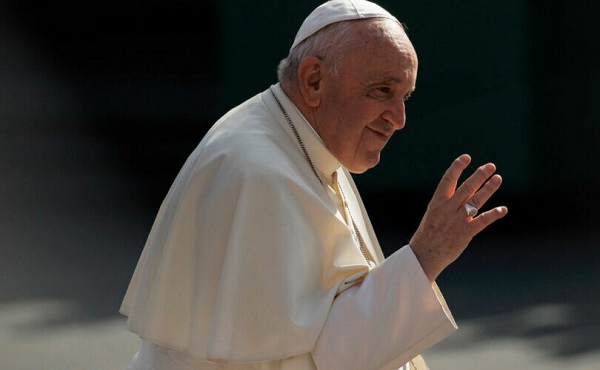
 International1 day ago
International1 day agoPope Francis has died aged 88
-
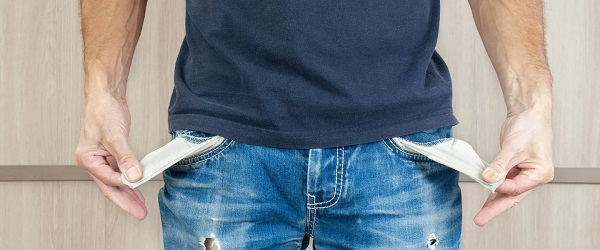
 Business1 day ago
Business1 day agoCanada Urgently Needs A Watchdog For Government Waste
-
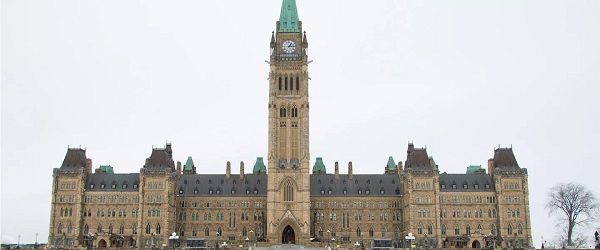
 2025 Federal Election1 day ago
2025 Federal Election1 day agoCarney’s budget means more debt than Trudeau’s
-
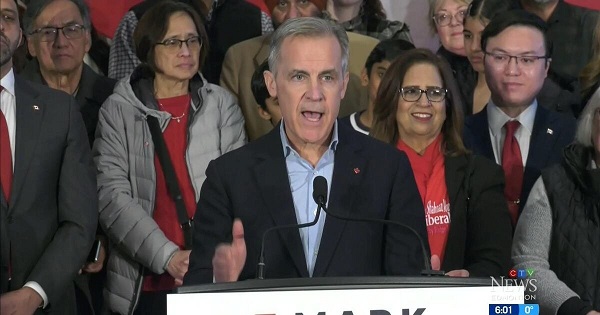
 2025 Federal Election13 hours ago
2025 Federal Election13 hours agoHow Canada’s Mainstream Media Lost the Public Trust
-

 International24 hours ago
International24 hours agoJD Vance was one of the last people to meet Pope Francis




